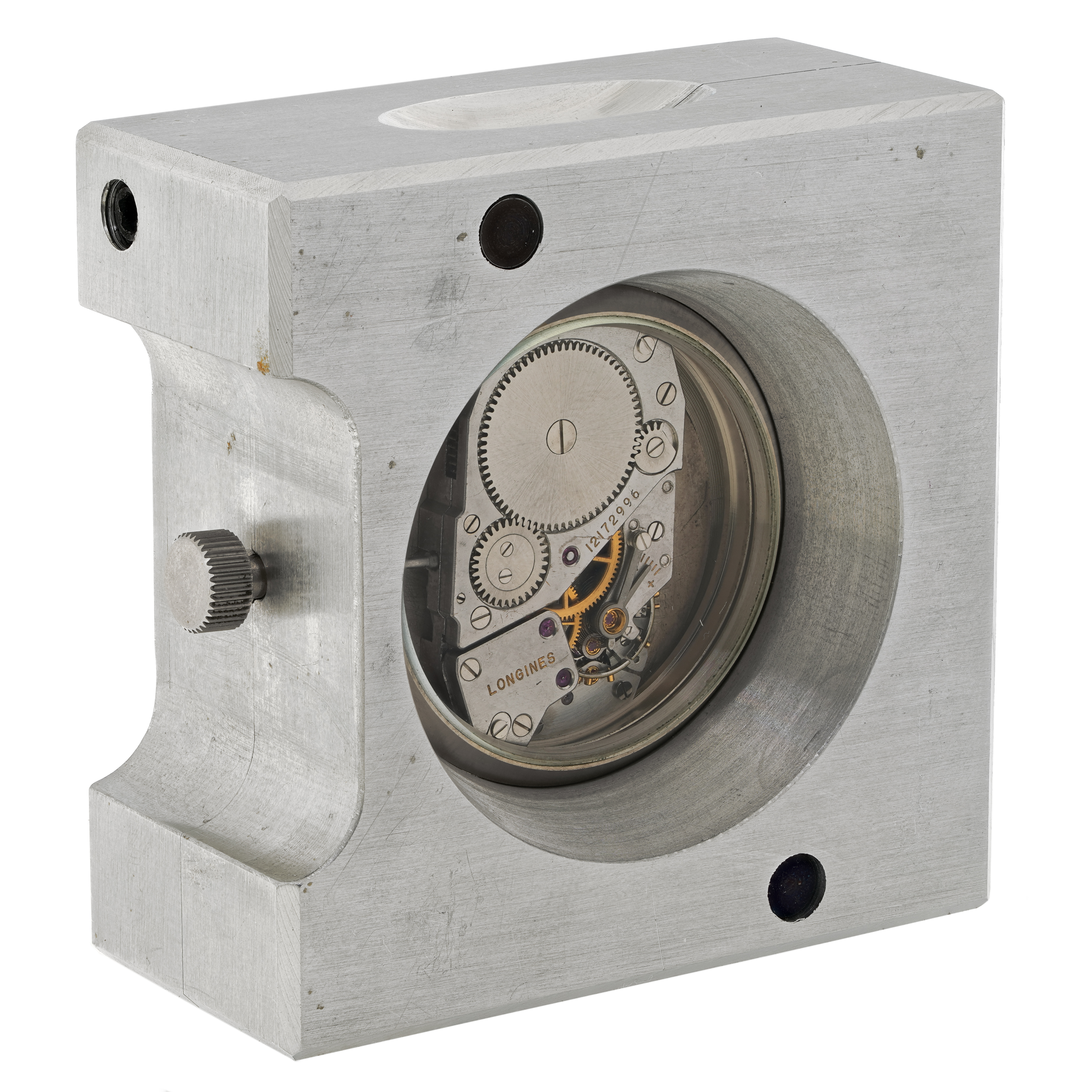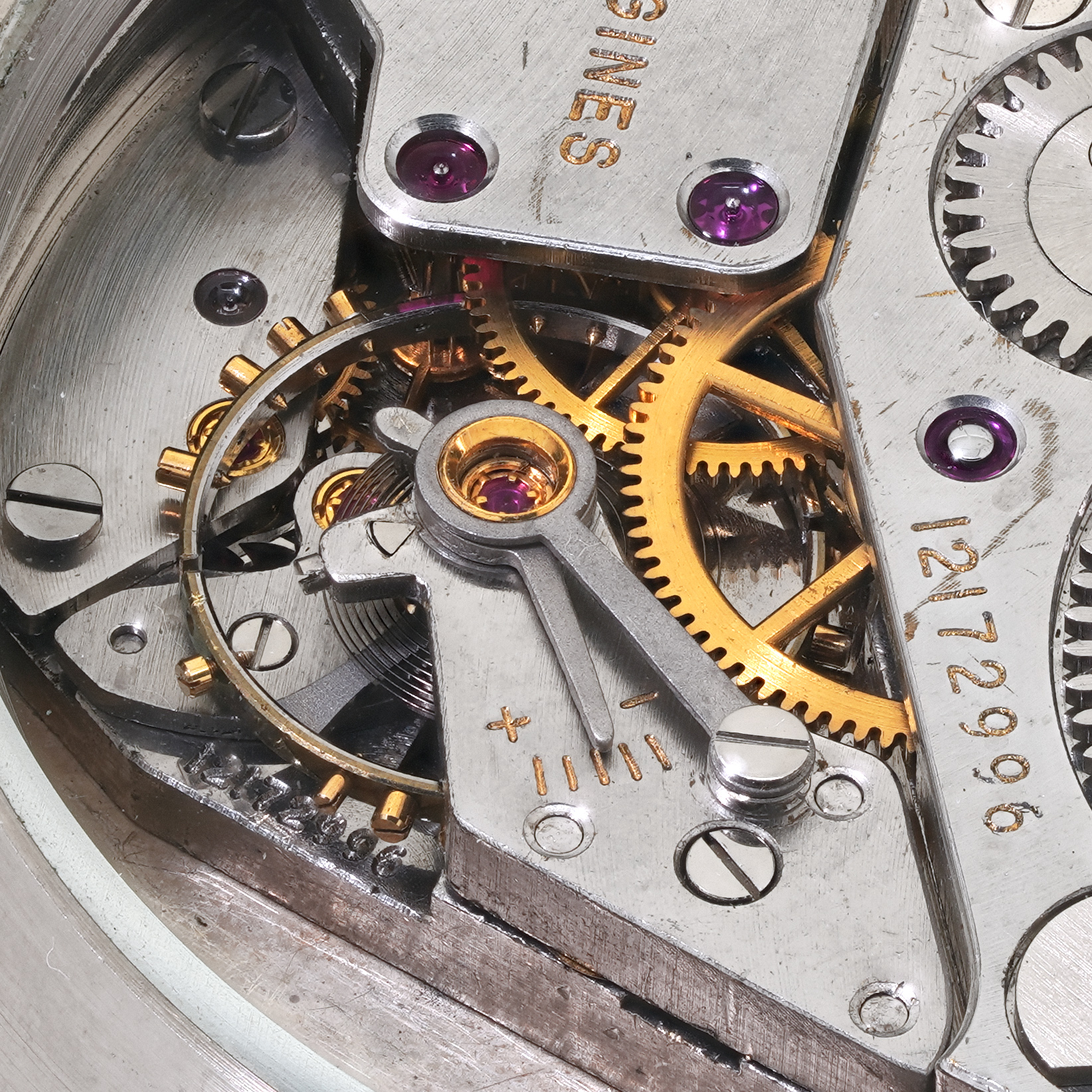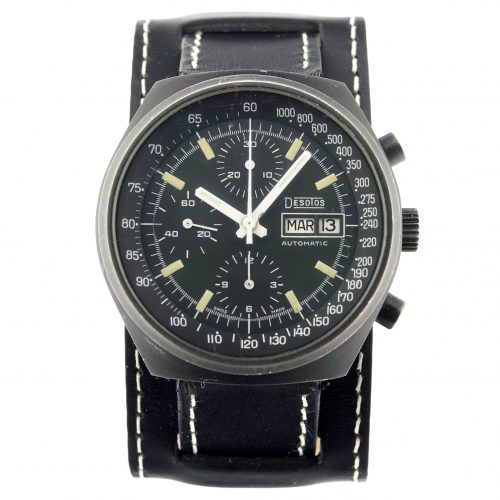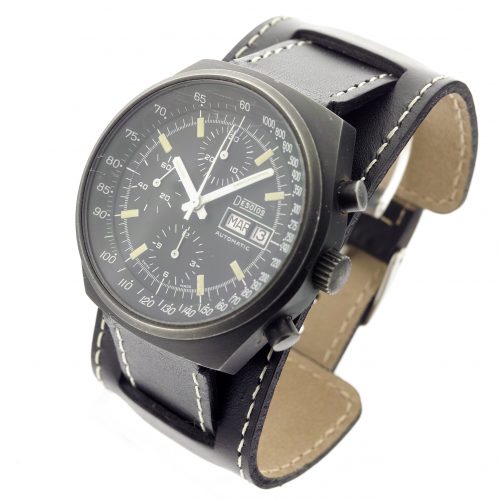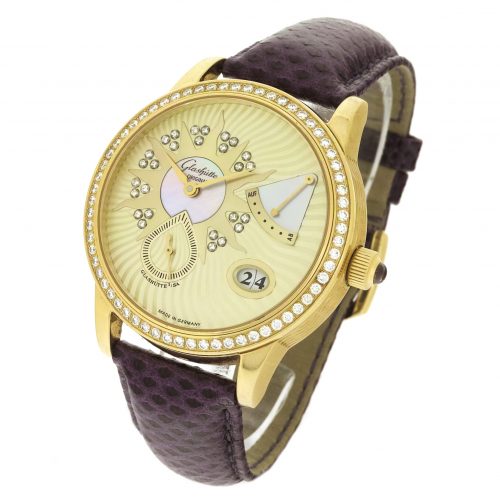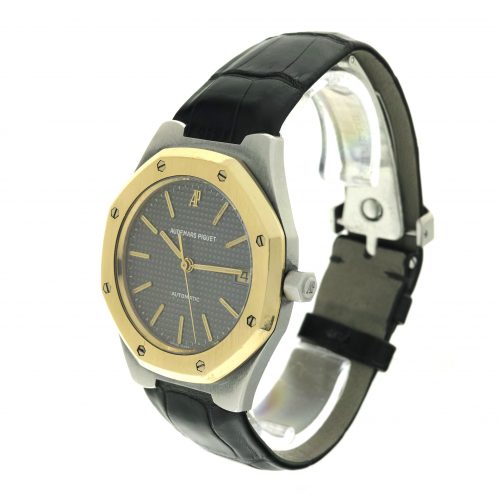Extremely rare and well-preserved fine LONGINES Observatory Competition chronometer SN. 12172996, Cal. L 360 (specifically intended for observatory competitions, high frequency up to 36,000 A/h, Guillaume balance), comes with its original testing aluminium housing and original archive extract from Longines.
There is no Bulletin associated with the movement number. This particular 360 was most likely an experimental piece and not meant for the concours. Longines tried out different hairsprings (steel, alloy, Nivarox, etc) and frequencies in their reglage workshop. The experimental character of that rare piece can be easily derived from the fact that it features an advanced autocompensating hairspring instead of the classic steel one.
Information from Longines’ handwritten archives: “Originally, the serial number 12’172’996 identifies a Longines mechanical manually wound, caliber 360. This movement was intended for observatories competitions and produced in 1962“.
At the beginning of the 1950s, Longines developed movements that were specially constructed for extreme precision. These models, which were not sold and produced only in small series, were intended for observatory competitions. In brief, these calibre were developed to serve as a technical showcase for the factory products; from the point of view of advertising, they served to illustrate the high-quality production of the company.
In 1959 Longines produced a movement with a shape specifically developed with a view to high precision, namely the 360. The 360 was a rectangular movement with cut off corners and dimensions of 32 x 22 x 5.3 mm. Its dimensions gave it a surface 705 square mm, which was very close to the limit set by observatories for the category of the movements for wristwatches. For example to qualify as a wrist chronometer the movement was required to have a diameter that did not exceed 30mm or have a surface area of 707 square mm or less, and a maximum thickness of 5.3mm.
Case: two-body aluminium protective/testing case, circular case, polished bezel, glazed transparent display back, large crown. Dial: silvered matte dial, Arabic numerals, blued steel feuille/leaf hands, engine-turned subsidiary seconds. Movement: Cal. Longines 360 rectangular-shaped nickel-finished lever movement, 23 jewels, advanced auto-compensating hairspring, 36000 bph, Guillaume balance with gold poising screws, oversized barrel, 5 bridges, dim. 32 x 22 mm, height 5.3mm, . Movement and dial signed, Diam. 53 mm; case 80 x 80 x 33 mm.
The model is prominently described and illustrated in Longines Watches by John Goldberger, p. 236-237. For another example of a calibre 360 Observatory movement see Longines by Daria Marozzi & Gianluigi Toselli, p. 25. As well as Longines watch movements (1832-2007), by Patrick Linder, p. 498-499.
Competition chronometer-quality wristwatch movements are not “ordinary” C.O.S.C. certified movements. These movements were designed and finished to excel in the rigorous world of Observatory Competitions, as conducted in Geneve and Neuchatel in the years 1944 through 1967.
Up until 1967, the exact length of a second was determined by the Earth’s motion around the sun, and the Neuchatel observatory’s precise optics allowed the fine measurements necessary for precise timesetting to be made. Because of this, Neuchatel began to host observatory chronometer trials – a series of the most stringent, thorough accuracy tests in the history of mechanical watchmaking. The trials, held over a period of forty-five days, encompassed ten separate movement timekeeping tests in five different positions and two temperatures. These observatory trials quickly outgrew their roots as a simple certification test, and before long the trials at Neuchatel were a competitive battleground for the finest watchmakers in Europe. Names like Longines, Zenith, Peseux, Omega and many more traded records for decades, fighting to produce the most accurate movement possible. These movements were never intended for regular use, and bore little to no resemblance to what these companies offered their consumers. Along with the technical prowess of the watchmakers building the movements, in the “racing team” there were specialists, the “regleurs de precision”, who worked tweaking a number of movements until they could find a few of them to bring to the Observatory Competitions. By means of fine adjustments, replacement of key parts, use of special lubricants, they could create a few movements for the Competitions. And often they were the same movements for many years.
Watch is in overall very good condition 8/10, however never been serviced after left Longines manufacture, so professional service is recommended.





